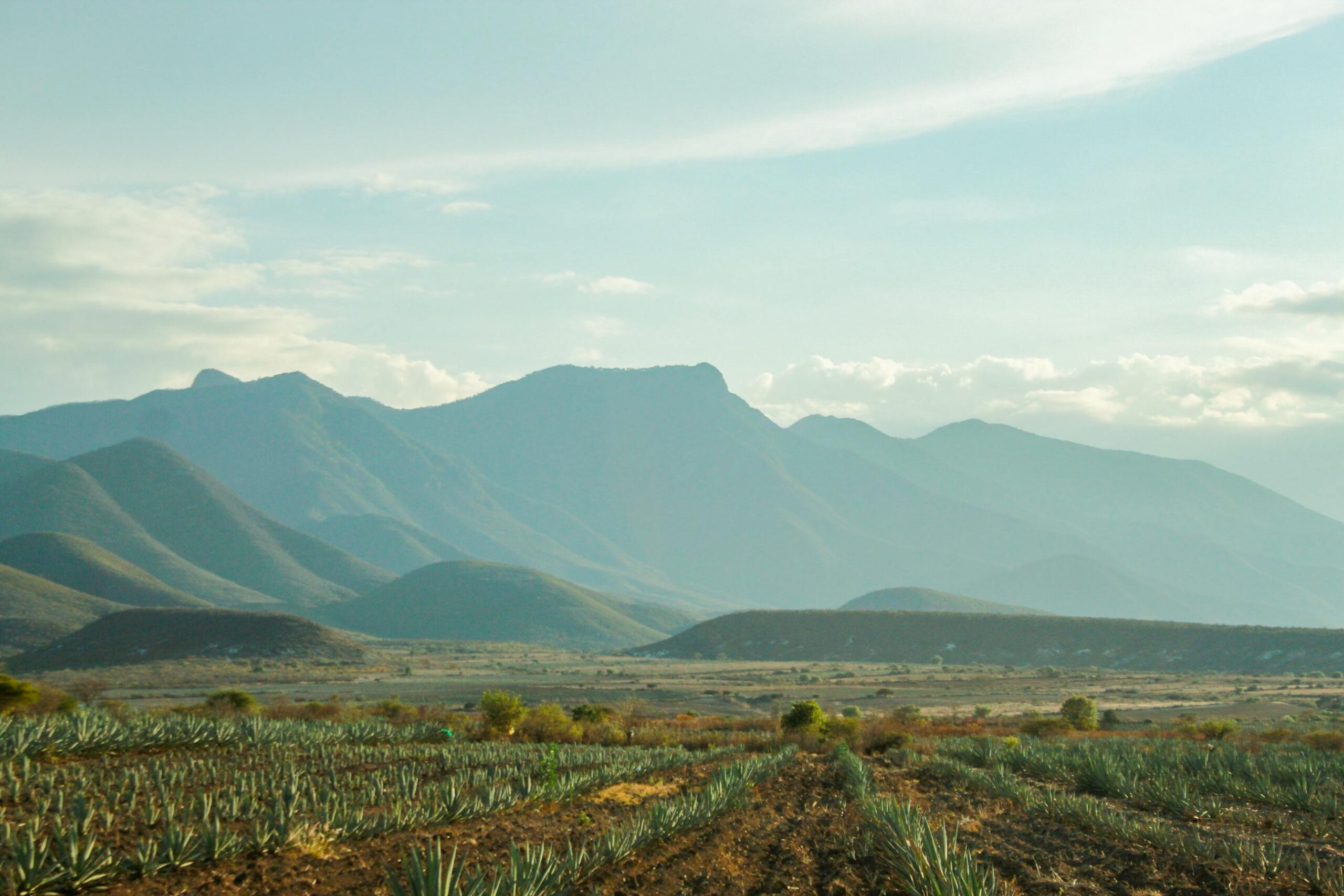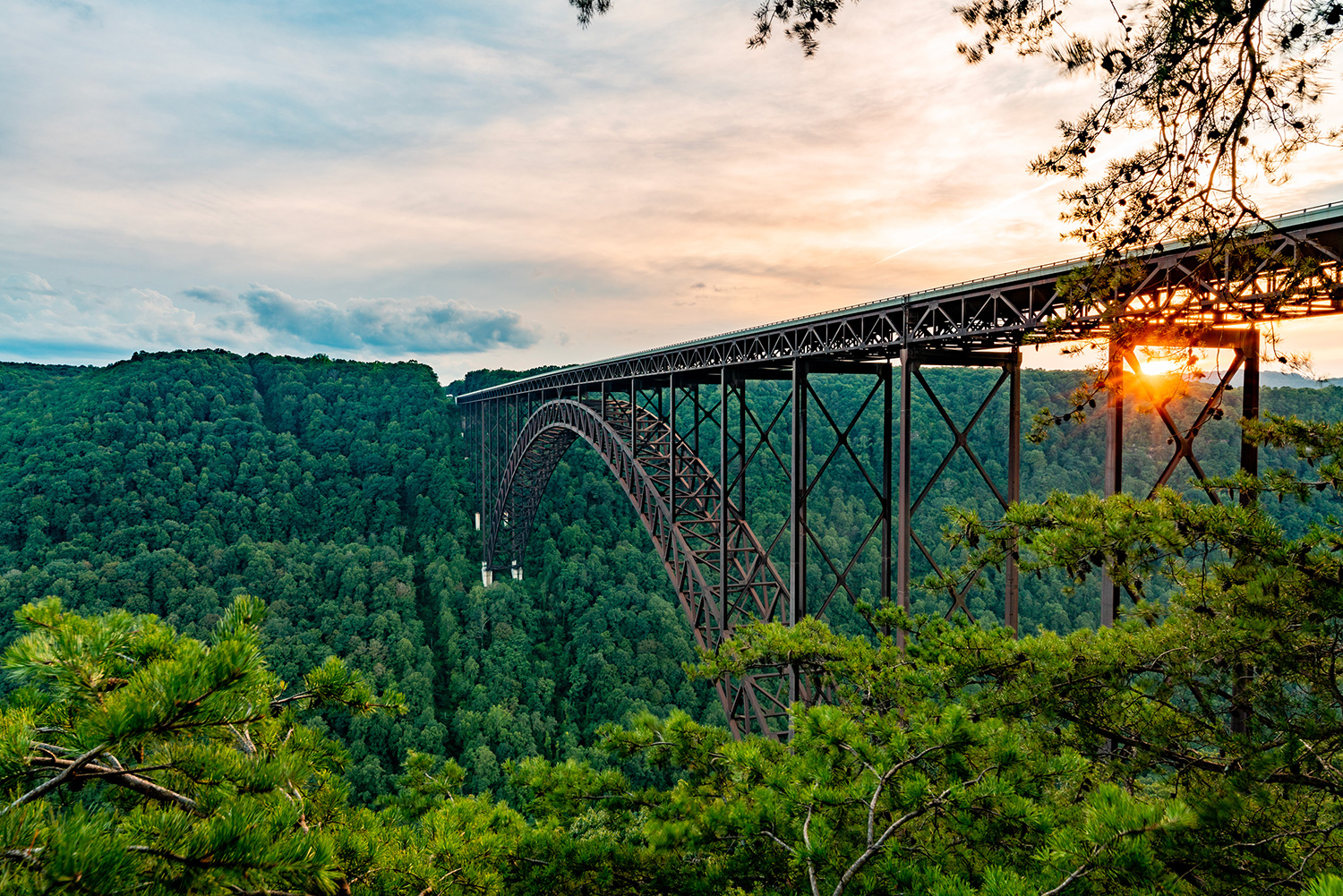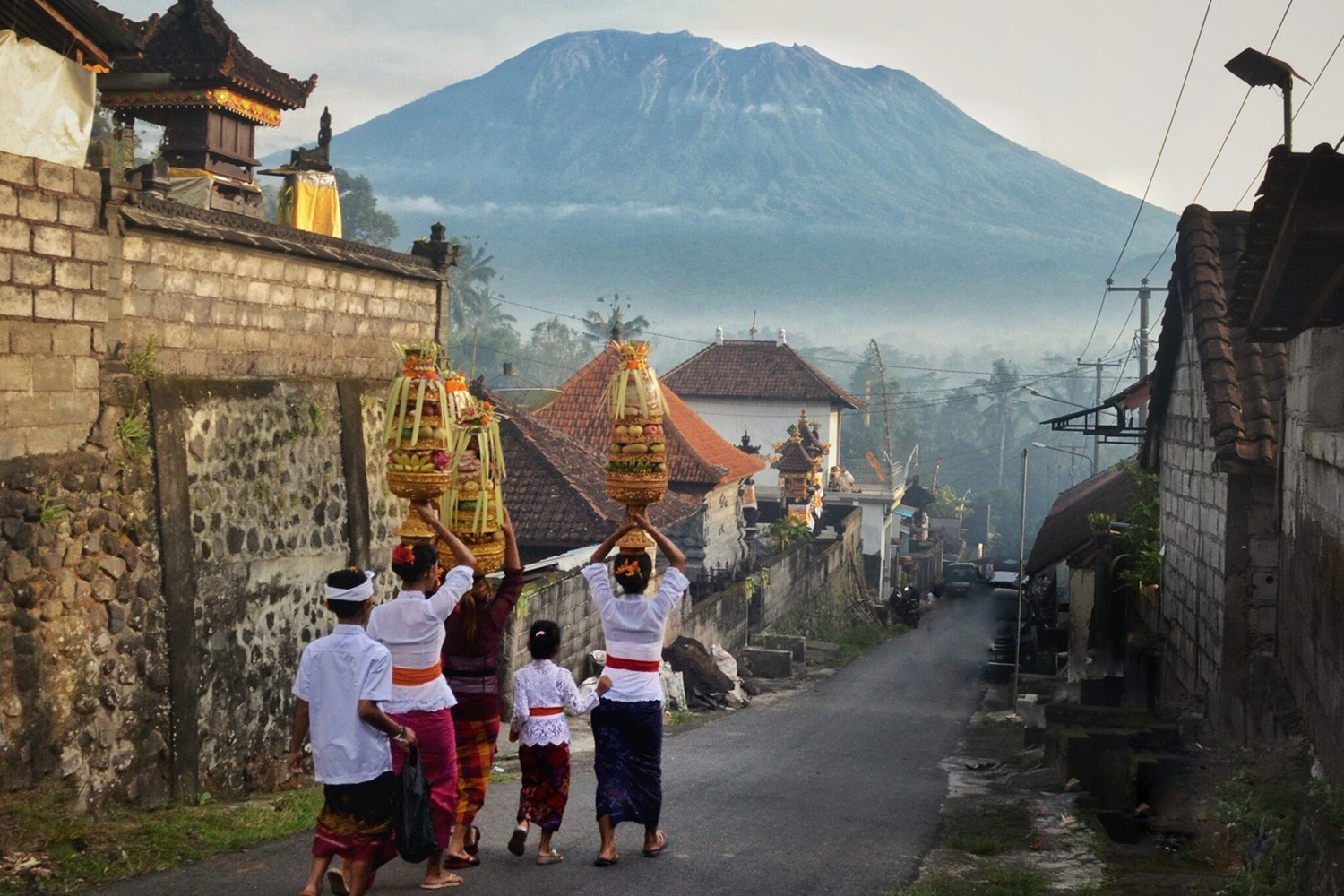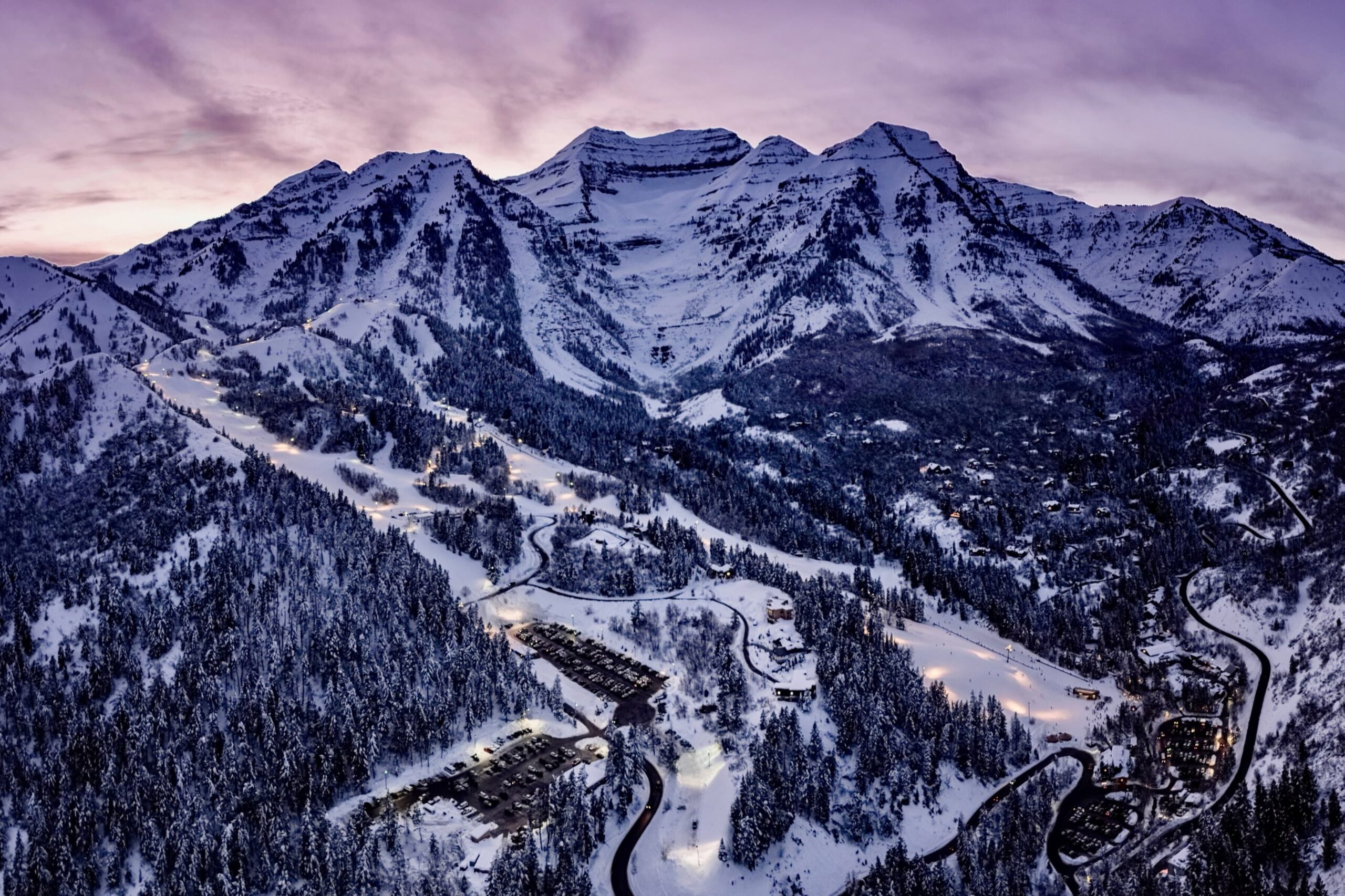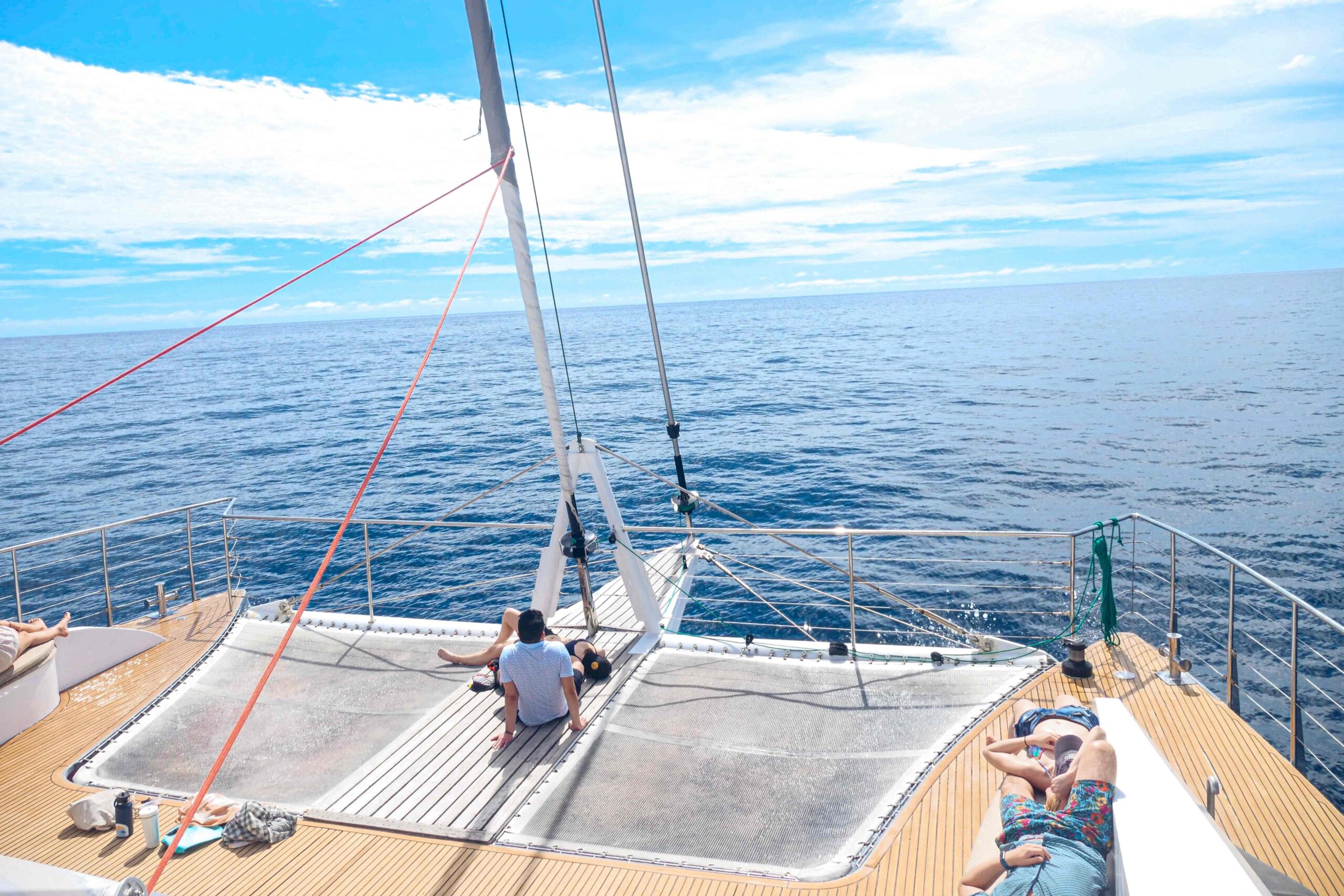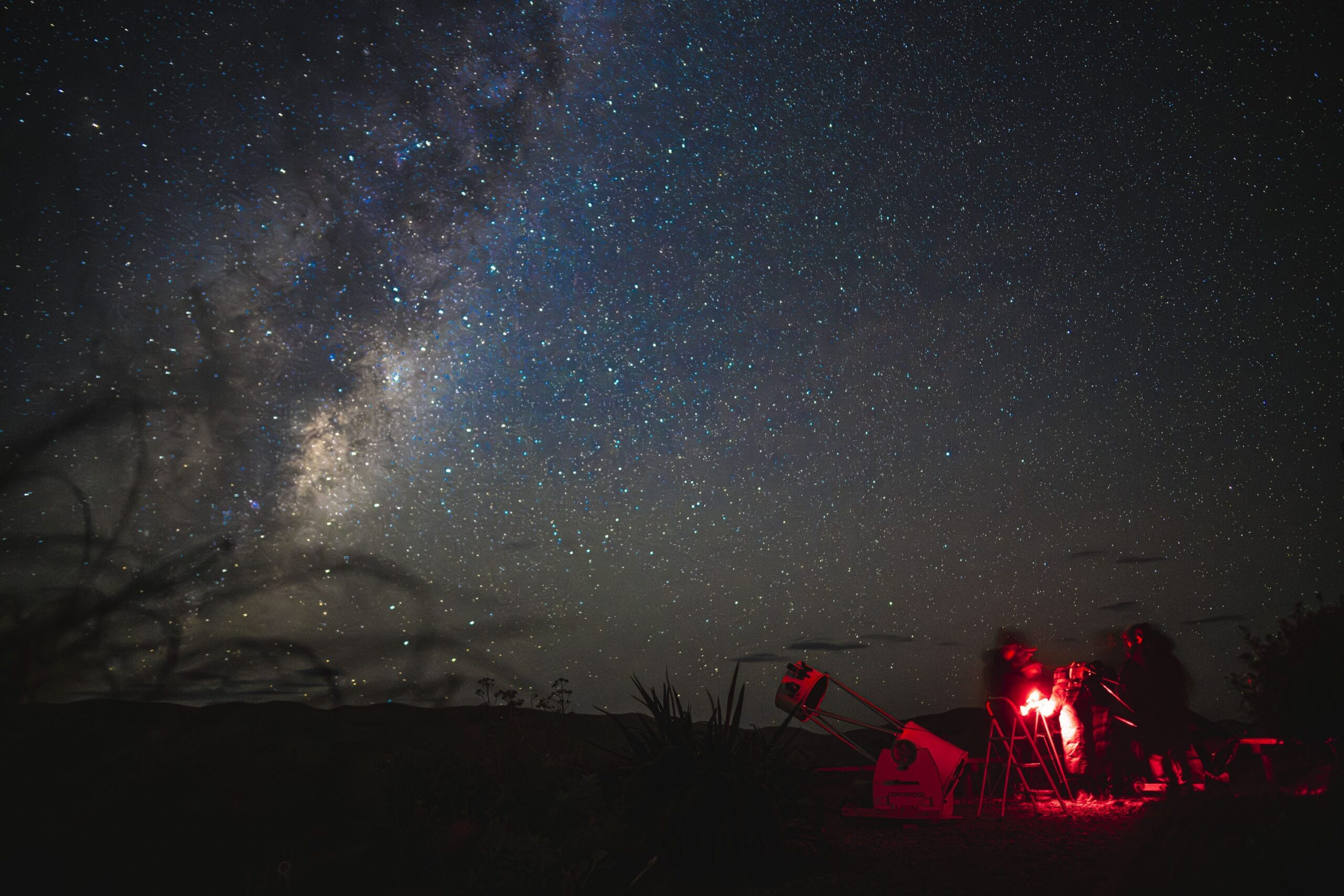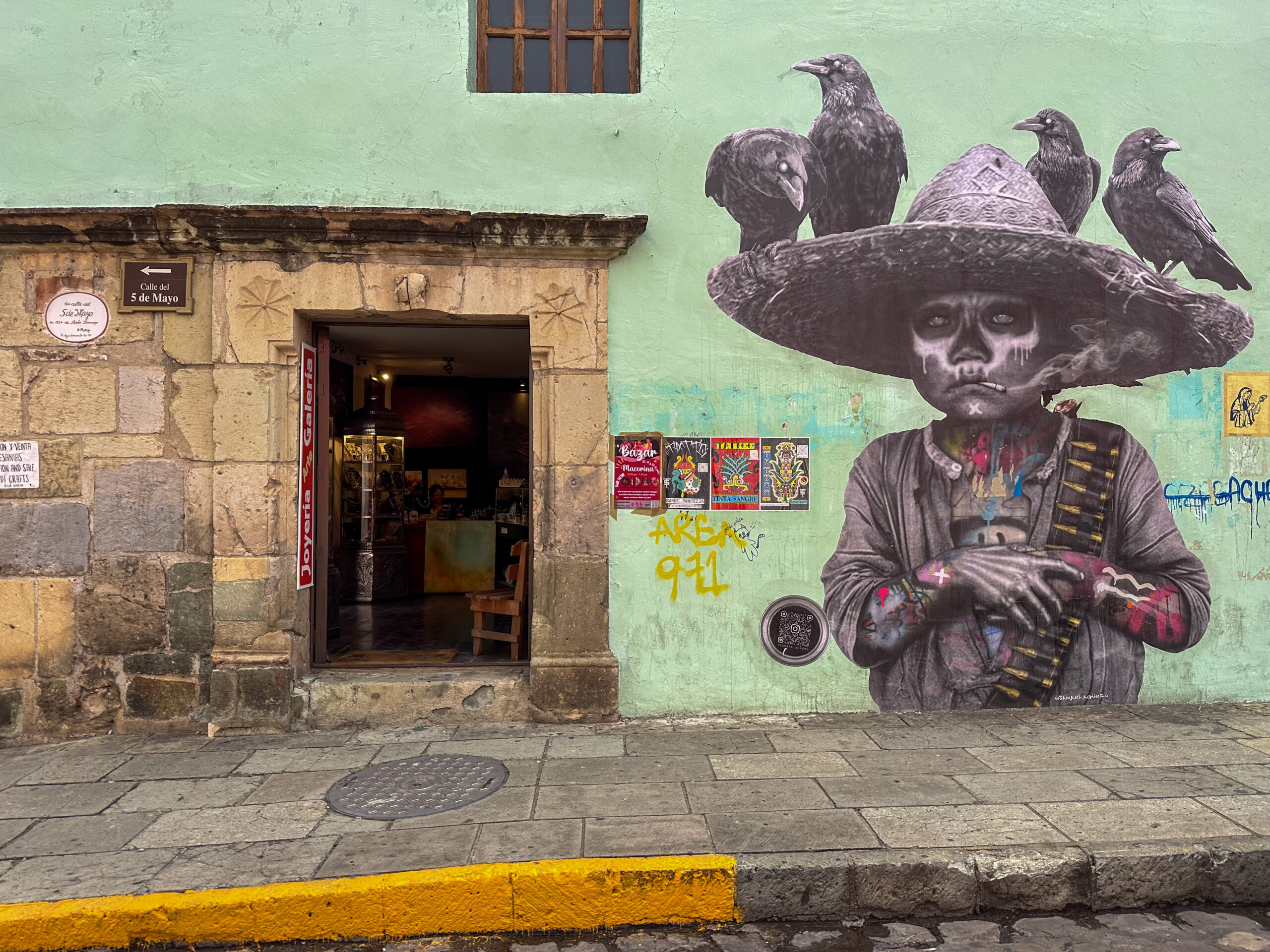
Street art in Oaxaca oustide one of the many mezcal tasting bars. Courtesy of Lauren Mowery.
What is Mezcal?
Mezcal is one of Mexico’s oldest and most culturally significant spirits, with a history dating back centuries. Unlike tequila, which is made exclusively from Blue Weber agave, mezcal can be produced from nearly 30 different agave species, each contributing distinct flavors and characteristics. This diversity makes mezcal a deeply regional and artisanal product, closely tied to the land and the people who produce it. Historically, small, family-run palenques have crafted mezcal using techniques passed down through generations, including underground pit roasting, natural fermentation, and small-batch distillation. These methods preserve mezcal’s heritage, ensuring each batch reflects the traditions of the communities that have safeguarded the craft for centuries.
Where Is Mezcal Grown and How Is It Regulated?
Mezcal has a Denomination of Origin (DO), meaning it can only be legally produced in designated regions of Mexico. It is primarily made in eight states: Oaxaca, Durango, Guerrero, San Luis Potosí, Tamaulipas, Zacatecas, Puebla, and Michoacán, with Oaxaca being its spiritual home and the largest producer. The DO was established to protect mezcal’s authenticity, but opinions on its effectiveness are mixed. Some producers believe it helps safeguard the category, while others argue it primarily benefits larger companies and limits smaller, independent mezcaleros. Despite these regulations, the mezcal industry remains a patchwork of small-scale producers, each crafting spirits that reflect their local environment and traditions.
What Influences the Taste of Mezcal?
Like wine, mezcal’s flavor is shaped by terroir, including the region’s soil, climate, and altitude. Different agave species contribute distinct characteristics: Espadín, the most common, is often fruity and smoky, while Tobala can be floral and herbal, and Tepextate leans earthy and peppery. Wild agaves, which grow in remote, rocky landscapes, develop intense flavors over years of slow maturation. The cooking method also plays a crucial role—whether roasted with mesquite, oak, or pinewood, each type of firewood adds its own nuance. Fermentation and the type of still used, whether copper or the ancestral clay method, further refine the final profile. These factors make mezcal an endlessly complex spirit, with no two batches tasting exactly alike.
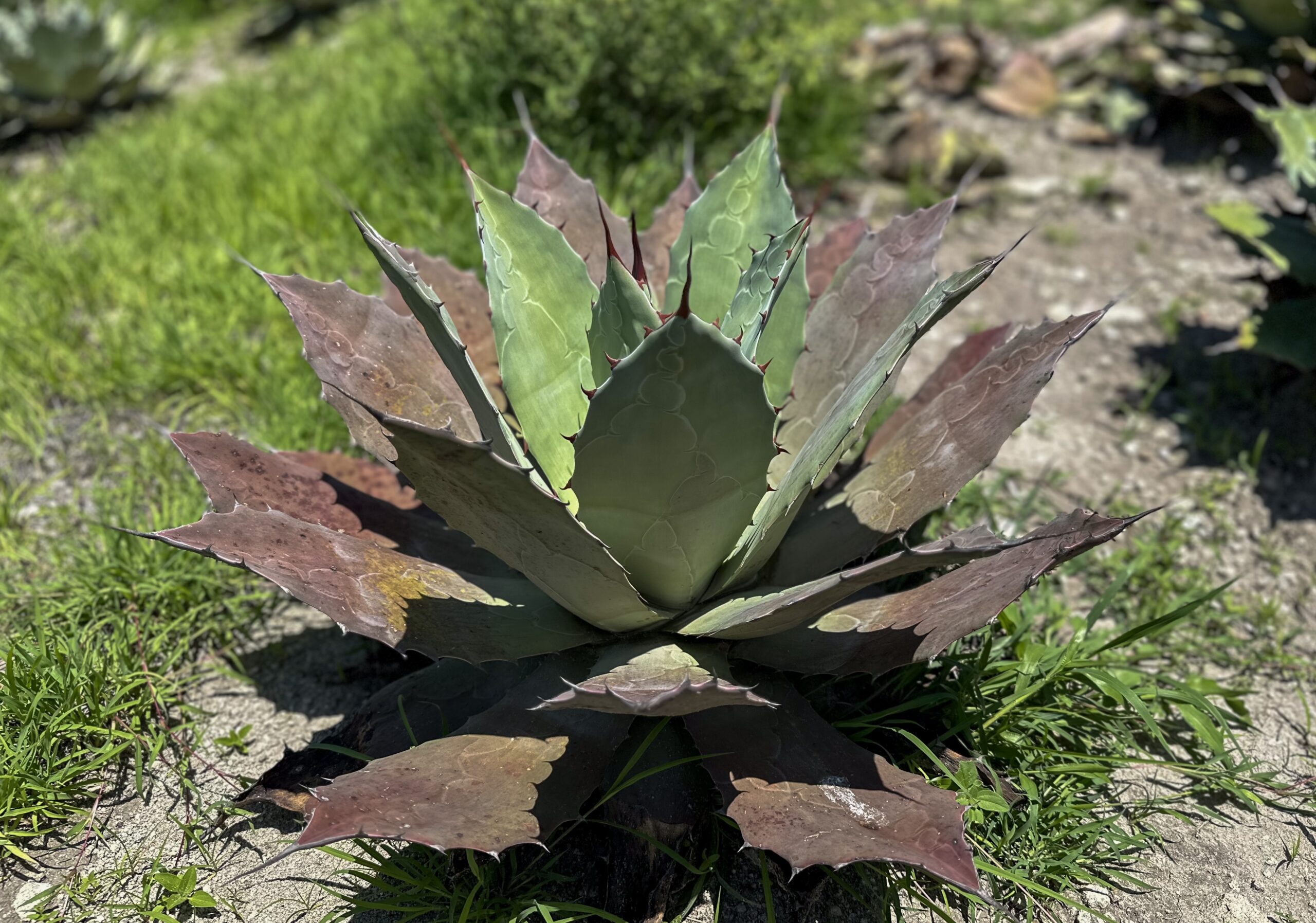
Agave plant. Image courtesy of Lauren Mowery
Why Is Mezcal in Trouble?
The surging global demand for mezcal has led to significant environmental and cultural challenges. Producers are increasingly overharvesting wild agave, some of which take up to 25 years to mature, leading to biodiversity loss and putting certain species at risk of extinction. To meet production needs, many operations are shifting toward monoculture plantations, which deplete soil nutrients and increase vulnerability to pests and disease. Unlike traditional agave farming, which relied on the milpa system —where agave grows alongside other crops to maintain ecological balance — large-scale commercial operations often clear land for intensive planting. This shift has caused deforestation, soil erosion, and a loss of traditional knowledge and farming practices.
Another major threat to mezcal’s future is the declining bat population. Many agave species, including those used for mezcal, rely on bats as their primary pollinators. However, habitat destruction and disease have put these pollinators at risk. Large mezcal producers often harvest agave before it flowers, preventing bats from feeding and disrupting natural agave reproduction. Without bats, wild agave populations will decline even further, making sustainable mezcal production increasingly difficult.
Compounding these issues, international conglomerates and celebrities have entered the mezcal industry, leading to concerns over cultural appropriation and the exploitation of local producers. Many large brands rely on outsourced production, removing profits from the communities that have passed down mezcal customs and knowledge for generations. This commercialization prioritizes mass production over heritage, sustainability, and fair economic practices, ultimately reshaping the industry in ways that benefit investors more than the rural mezcaleros who built it. Without action to support traditional farming methods, protect pollinators, and ensure economic equity, mezcal risks becoming another overindustrialized commodity rather than the artisanal spirit it was meant to be.
Why Support Small-Batch Artisanal Mezcal?
Supporting small-batch artisanal mezcal helps preserve traditional production methods that have been passed down through generations. Unlike large-scale operations, many small producers continue to use ancestral techniques such as underground pit roasting, natural fermentation, and small clay or copper stills, maintaining the spirit’s authenticity and complexity. Artisanal mezcal production is also more environmentally sustainable, with many producers cultivating agave in diverse ecosystems rather than monoculture plantations, which helps conserve biodiversity and soil health. Additionally, buying from small producers directly supports rural communities, keeping profits in the hands of mezcaleros and their families rather than large corporations. Choosing small-batch mezcal ensures the survival of both the craft and the cultural heritage behind it.
How to Taste Mezcal: The Three Kiss Method
Tasting mezcal is similar to tasting wine—it rewards those who pay attention to its nuances. Each sip reveals layers of flavor, texture, and warmth, influenced by the agave variety, terroir, and production methods. Experts recommend the “three kisses” method: take a small sip, let it coat your mouth, and slowly exhale to adjust your palate. The second sip allows the spirit’s complexity to unfold, while the third brings out its full character. Notice the balance of smoke, minerality, sweetness, spice, or herbal notes, as well as the texture—whether silky, oily, or dry. A well-made mezcal lingers, evolving on the palate long after the sip.
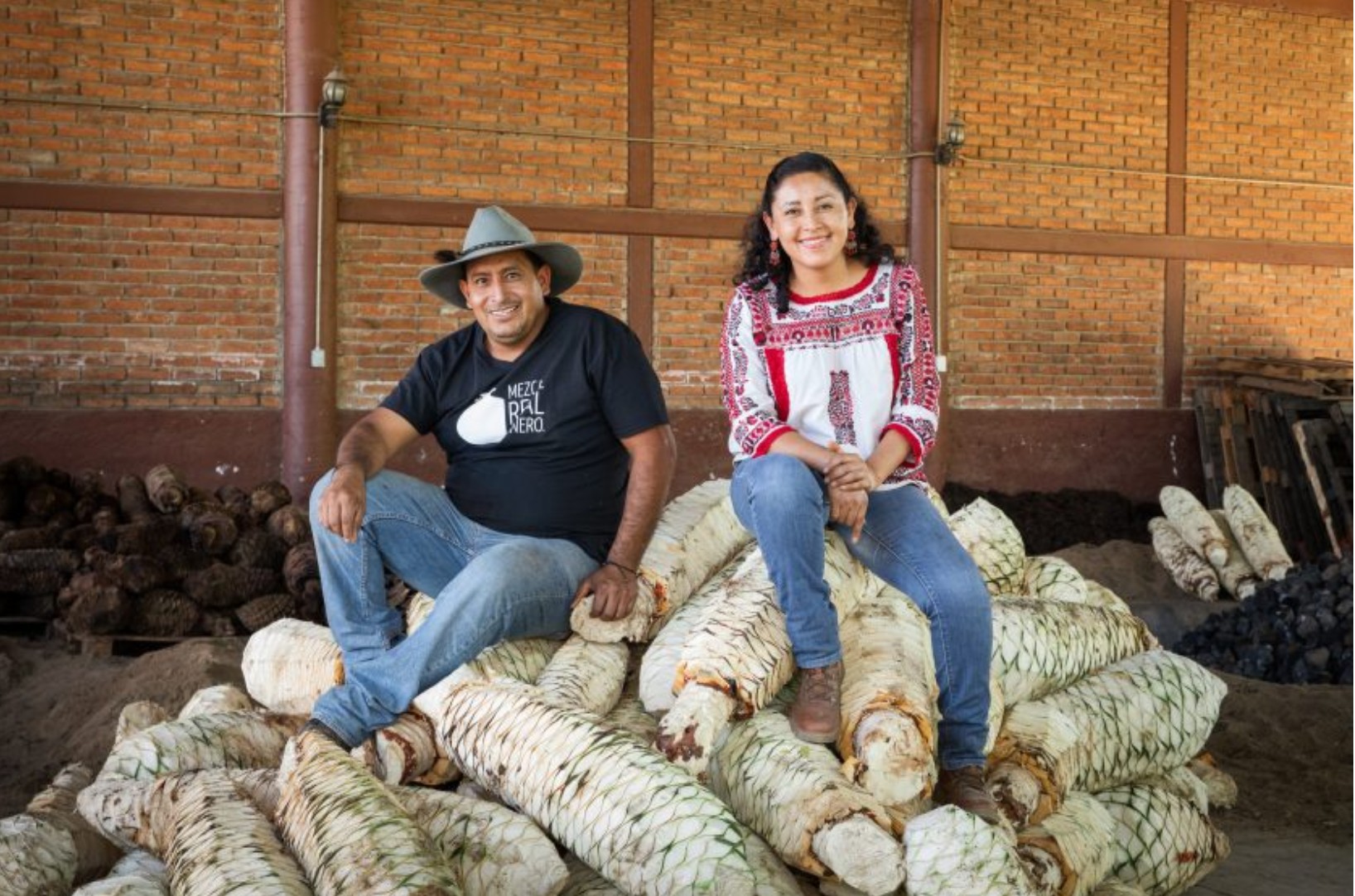
Siblings and fifth generation mezcal producers Edgar and Graciela Ángeles Carreño. Courtesy of Skurnik.
North Stars: Community Support, Wildlife and Ecosystems, Heritage Value
The Ángeles family has run Real Minero for four generations in Santa Catarina Minas, Oaxaca. Don Francisco Ángeles began making mezcal in secret during a time when production faced government restrictions. His grandson, Don Lorenzo Ángeles, later refined the craft and gained recognition as a master distiller. After Don Lorenzo passed in 2016, his son, Edgar Ángeles Carreño, took over as maestro mezcalero, while his daughter, Graciela Ángeles, stepped into a leadership role managing sales and representing the brand. In a male-dominated industry, Graciela has modernized operations while preserving traditional methods, including the use of ceramic stills unique to the region.
Real Minero actively promotes sustainability through Proyecto Lorenzo Ángeles Mendoza (Proyecto LAM), cultivating wild agave species to combat overharvesting and protect biodiversity. The team runs reforestation programs, improves soil health, and maintains a closed-loop water system to reduce environmental impact. By focusing on long-term agave conservation, Real Minero safeguards both its craft and the ecosystem that sustains it.
Bottle to find: Real Minero Espadín, $130
- Variety: Espadín (Agave angustifolia)
- Origin: Santa Catarina Minas, Oaxaca
- Milling: Milled using machete, mallet, and small electric grinder
- Fermentation: Fermented in open-air wooden vats (tinas)
- Cooking Method: Cooked in earthen oven
- Distillation: Distilled twice in clay pots
- ABV: 53.4% (varies by batch)
- Maestro Mescalero: Edgar Angeles Carreño
How does it taste?
Since taking over the helm at the palenque, Edgar Angeles Carreño has been returning to a more concentrated, high-proof and historic style of distillation — rarely dipping below 100 proof — making this Espadin a powerful introduction to mezcal en barro the way it was made centuries ago. This sultry example exhibits notes of sage, dried fruit, pear skin, and subtle smoke with a long, dry finish.
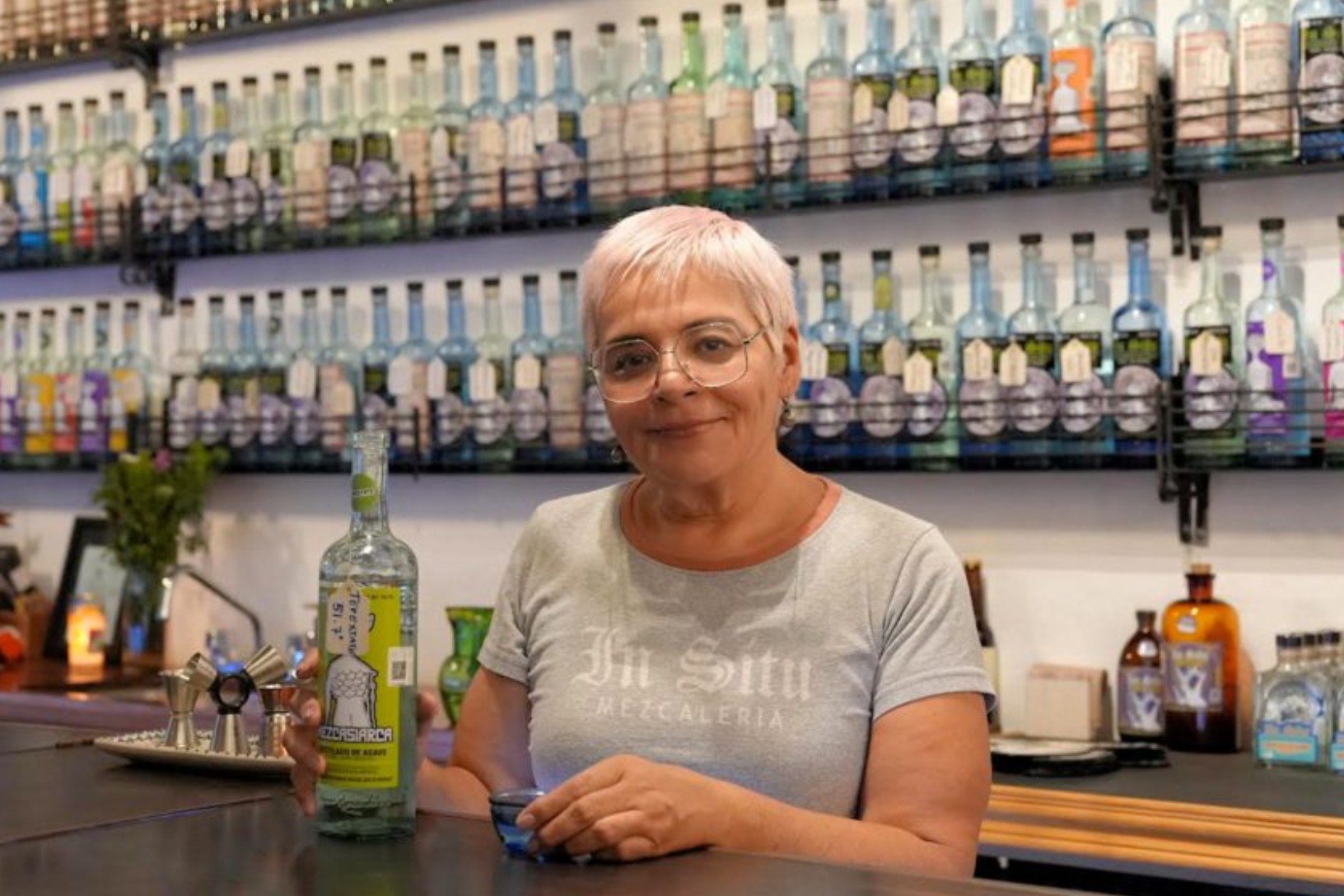
Sandra Ortíz Brena, co-founder of In Sítu Mezcalería in Oaxaca City. Courtesy of Skurnik.
North Stars: Community Support, Wildlife and Ecosystems, Heritage Value
Sandra Ortíz Brena founded Mezcasiarca, a mezcal brand that builds on her work as co-owner of In Situ Mezcalería in Oaxaca City. In 2010, she and writer Ulises Torrentera, a leading voice on mezcal history and culture, opened the mezcal bar and tasting room, which became known for its extensive selection of traditional mezcals. Drawing on this foundation, Sandra launched Mezcasiarca to bring rare, heritage mezcals to a wider audience. The name refers to individuals, often women, who serve mezcal at gatherings, reflecting her nostalgia for communal mezcal traditions.
Mezcasiarca sources its mezcals from skilled maestros across southern Mexico, focusing on small-batch production and traditional methods. Many of its expressions are bottled at still strength, highlighting the nuances of different agave varieties and regional distillation techniques. The brand prioritizes working with producers who maintain ancestral practices, ensuring each batch reflects the craftsmanship and biodiversity of its origin.
Bottle to find: Mezcasiarca Destilado de Agave Ensamble Ancestral, $190
- Varieties (blend): Maguey Tobasiche (Agave Karwinskii); Maguey Barril (Agave Karwinskii); Maguey Espadin (Agave Angustifolia)
- Origin: Santiago Matatlan, Oaxaca
- Milling: Tahona crushed
- Fermentation: Oak wood tubs
- Cooking Method: Roasted with White oak in underground stonelined oven
- Distillation: Twice in clay still
- ABV: 47.80%
- Curated by: Sandra Ortiz Brena
- Maestro Mezcalero: Israel Perez
How does it taste?
The Mezcasiarca Destilado de Agave Ensamble Ancestral offers a rich and layered profile, with aromas of smoked cedar, Bosc pear, olive oil, wet moss, and toasted oats. The palate balances earthy and spiced elements, featuring sumac, ginseng, walnut skin, and charred root vegetables, with a hint of baked apple adding depth. Its full-bodied texture, mineral undertones, and lingering smoky finish.
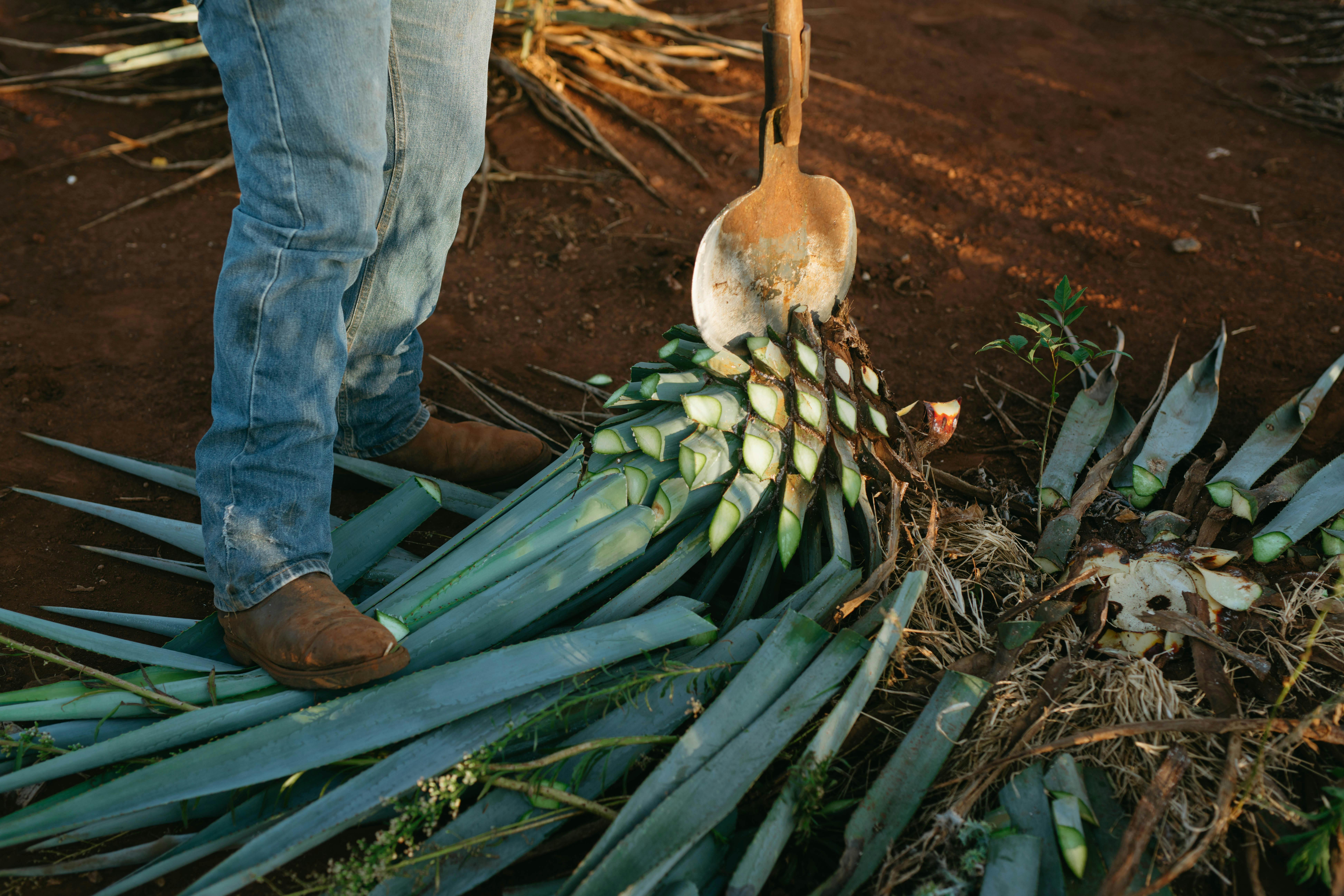
Harvesting an agave plant. Courtesy of Pexels.
North Stars: Community Support, Wildlife and Ecosystems, Heritage Value
Ultramundo Mezcal is an agroforestry project founded by Sergio Garnier, aiming to rejuvenate the land through sustainable mezcal production. Located on the 24,000-acre Rancho Pelayo in Mapimí, Durango, the project focuses on crafting artisanal mezcal exclusively from wild Maguey Lamparillo (Agave asperrima). To promote ecological balance, at least 20% of mature agaves are left to flower and seed naturally, ensuring population regeneration.
The production process adheres to traditional methods: roasting agaves in underground, volcanic stone-lined pit ovens with mesquite and pine firewood for three days; hand-milling the cooked agave with axes; fermenting with wild, ambient yeast in open-air, in-ground, oak-lined wells for two to four days, depending on the season; and double distillation in wood-fired copper pot stills with oak condensers. This meticulous approach yields a mezcal with bright and fresh flavors, including notes of grapefruit zest, lemongrass, and sustained minerality, capturing the essence of its unique terroir.
Rancho Pelayo is situated near the enigmatic “Zona del Silencio” (Silent Zone), a region noted for its unique electromagnetic properties and rich biodiversity. Initially dedicated to breeding stallions within a regenerative livestock system, the ranch now supports a diverse ecosystem. Cows, deer, and wild boars contribute to the mezcal process; approximately 15% of harvested agaves have been caponed—had their flower stalks cut—by these animals, influencing the plant’s sugar concentration and, consequently, the mezcal’s flavor profile.
Bottle to find: Ultramundo Lamparillo, $150
- Variety: Maguey Lamparillo (wild Agave Aspérrima)
- Origin: Durango
- Class: Joven, Artisanal
- Milling: Hand pounded with an axe.
- Fermentation: Natural, outdoors in rectangular, buried vats made of sabino wood for 2 to 4 days.
- Cooking Method: 3 days in underground oven made of volcanic rock with mesquite, pine, and oak.
- Distillation: Double in artisanal still with a copper pan, sabino wood cap and copper coil, heated with pine and mesquite wood.
- ABV: 48-52%
- Maestro Mezcalero: Varies
How does it taste?
The wild Lamparillos agave takes 15-18 years to reach maturity, and only agave from Rancho Pelayo in Mapimí, Durango is used. This bottle delivers a bright and complex profile. On the nose, citrus and herbal notes emerge, with hints of grapefruit zest and lemongrass. The palate is layered, combining a minerally backbone with touches of pepper, brown sugar, and a subtle root beer-like sweetness. The texture is rich yet balanced, with an earthy depth. The finish lingers with a mix of spice and freshness.
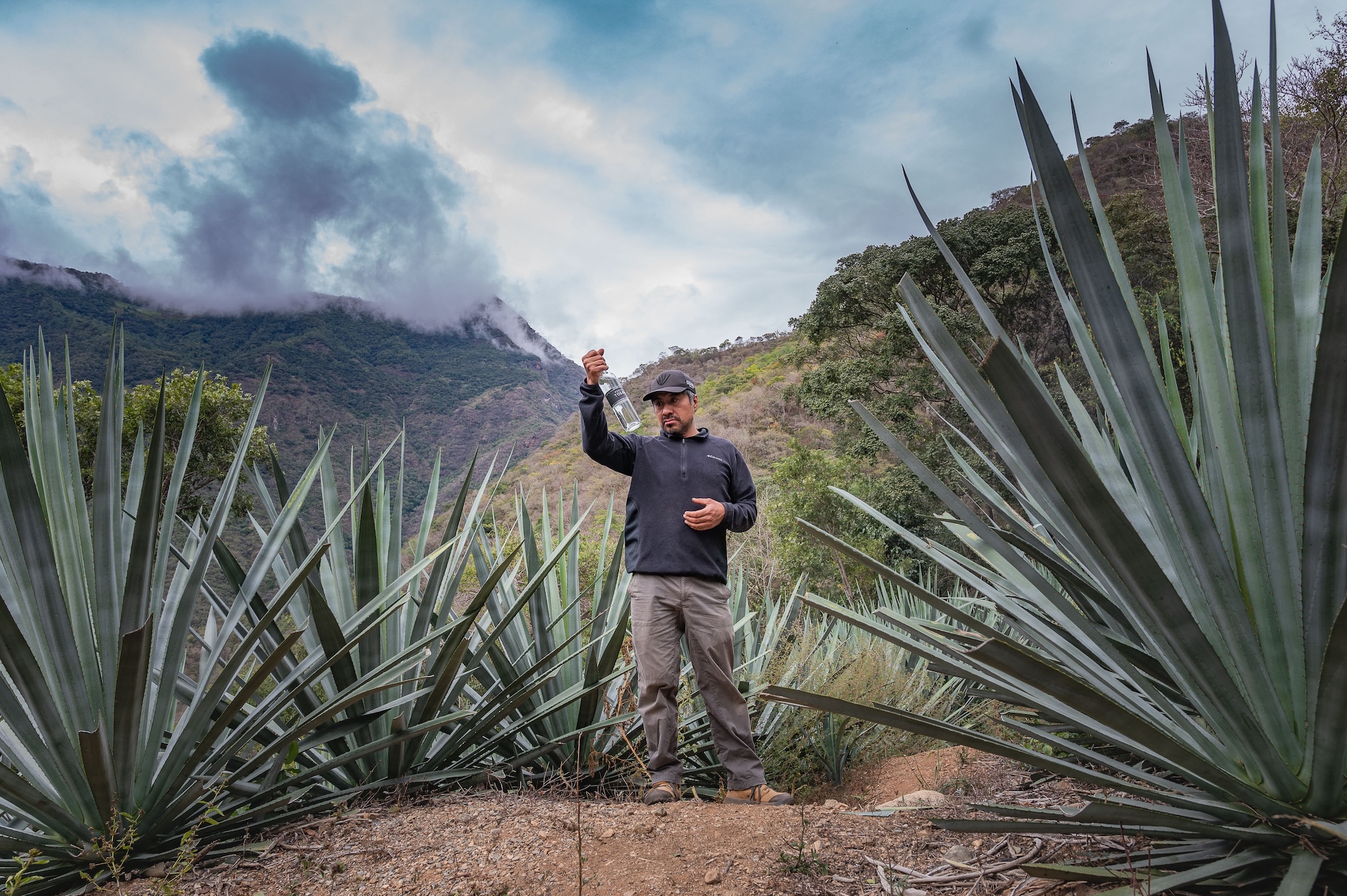
Tosba Mezcal. Image Courtesy of Anna Bruce
North Stars: Community Support, Wildlife and Ecosystems, Heritage Value
Tosba Mezcal is a family-owned brand founded by first-generation mezcaleros who, after migrating to Silicon Valley in 2000, aspired to revive traditional mezcal production in their native San Cristóbal Lachirioag, a remote village in the Sierra Norte of Oaxaca. This mountainous region, part of the Sierra Madre Oriental, rises sharply from the valley floor, creating a landscape of deep ravines, dense forests, and extreme ecological diversity. At lower elevations, the climate is subtropical, while the higher altitudes are frequently covered in fog and rain. Tosba cultivates its agave alongside tropical fruits, sugarcane, and coffee, reflecting the region’s varied microclimates. Their Espadín mezcal is a signature expression.
Before Tosba, San Cristóbal Lachirioag had little economic opportunity, and migration to the U.S. was often the only option for work. With no local industry, the village’s future was uncertain. By launching their mezcal business, Tosba’s founders created jobs, reversed migration, and restored economic stability. Their success proved that investing in local resources could sustain small communities. Today, Tosba supports multiple families, showing that mezcal is more than a spirit, but it’s also a vehicle for economic resilience.
Bottle to find: Espadín, $65
- Variety: Maguey Espadín (Agave Angustifolia)
- Origin: San Cristobal Lachirioag, Oaxaca (northern part of the state.)
- Milling: Traditional stone tahona
- Fermentation: Fermented in open-air pine vats (tinas)
- Cooking Method: Cooked in a conical earthen pit oven with adobo top, fired by collected driftwood
- Distillation: Distilled twice using traditional wood-fired copper pot stills.
- ABV: 48.5% (varies by batch)
- Maestro Mezcalero: Edgar Gonzalez Ramirez
How does it taste?
The agaves used for Mezcal Tosba grow among coffee, mango, pineapple and banana trees as well as sugarcane. Lighter bodied and more acidic than most Espadín, this is a unique, tropical example of Espadin which highlights the influence of terroir in mezcal. Made with ten year old Espadin, this bottle has a light and bright nose of citrus which follows with a touch of tropical fruit on the palate. The subtle smoke flavor comes from the driftwood used to roast the agave hearts in Tosba’s unique adobe-lipped earthen oven.
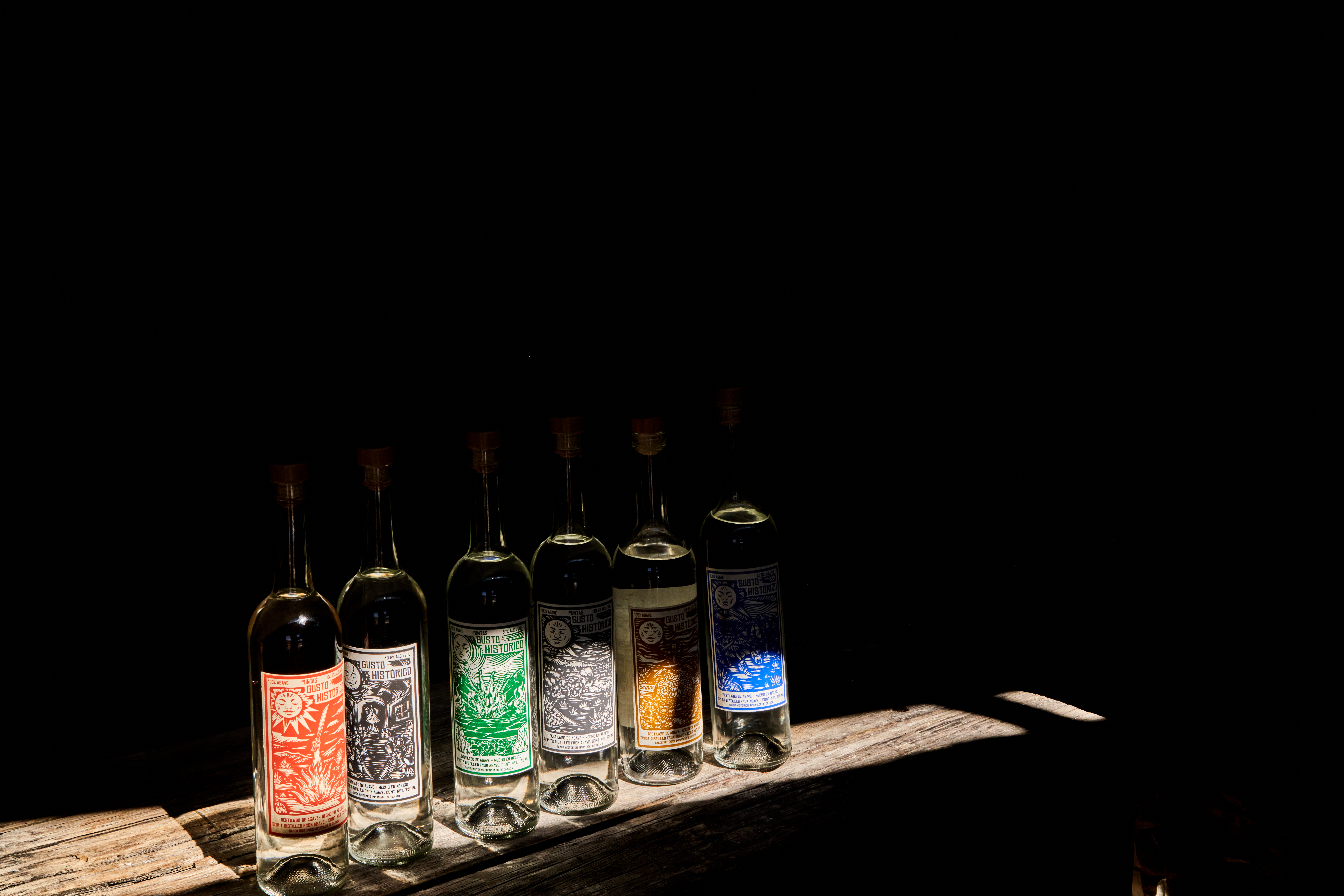
Marco Ochoa founded Gusto Histórico in 2021. Courtesy of Marco Ochoa.
North Stars: Community Support, Wildlife and Ecosystems, Heritage Value
Gusto Histórico was launched in 2021 by Marco Ochoa. As co-founder and former owner of Mezcaloteca, a tasting bar in Oaxaca, Ochoa seeks to help bring the traditional distillation methods of rural mezcal communities to a wider audience through his branded selections. Gusto Histórico, which means ‘historic taste’ works with highly respected maestros mezcaleros while emphasizing field blends which preserves the heritage flavors of each region. As the brand expands, it continues to source small-batch productions from renowned producers across Oaxaca, ensuring that each release reflects the deep-rooted techniques and terroir of its place of origin. Such producers include Eusebio Santos. Santos and his family, who are located in a remote corner of Oaxaca’s famed mezcal hub Miahuatlán, produce incredible mezcales with an emphasis on the small rare Cuixito agave, thought to be regionally distinctive subspecies of Agave karwinskii.
Bottle to Find: Gusto Historico ‘Eusebio Santos’, $115
- Varieties (field blend) 30% Cuixito (wild Agave Karwinskii); 40% Espadín (Agave Angustifolia); 30% Tepextate (Agave Marmorata).
- Origin: Mengolí, Miahuatlán, Oaxaca
- Milling: Traditional stone tahona mill
- Fermentation: Fermented with natural yeast in open-air cypress wood vats for 6-7 days.
- Cooking Method: Agave cooks in a conical earthen oven, rest 3-4 days before milling.
- Distillation: Distilled twice, using traditional copper pot still
- ABV: 46.6%
- Maestro Mezcalero: Eusebio Santos
How does it taste?
The Espadín in this blend is cultivated by the family within their milpa – the Nahuatl term for cross-cultivation farming practices (as opposed to a monoculture), which emphasizes “the three sisters” of corn, beans, and squash. This traditional practice is distinct from the vast majority of Espadín being grown in the Central Valles of Oaxaca, which are increasingly grown in trimmed fields of monoculture cloned A. angustifolia. By farming with the milpa method, nutrients, enzymes, and yeasts in the fields are diversified and enhanced by this regenerative agricultural practice, yielding stronger agave and increased biodiversity within the species on their land. This blended batch showcases the trademark tropical aromatics of Cuixito with vibrant and peppery Tepextate, the blend sweetened with Espadín. It’s exotic and yet crowd-pleasing.


